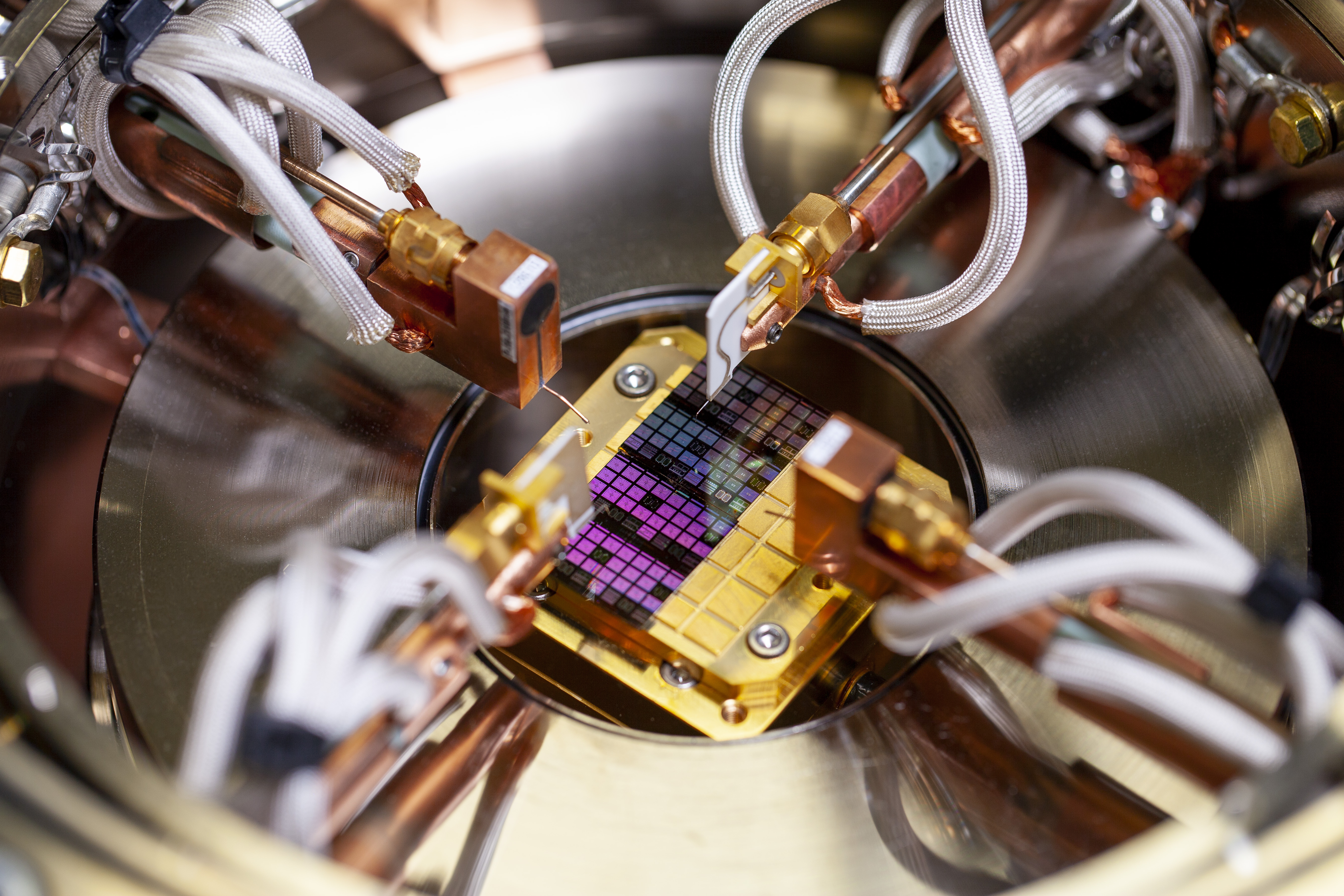
Fraunhofer IAF develops ultra-low noise and compact high frequency electronics, for applications such as space communication, climate and Earth observation from space and quantum computing. Electronics in quantum computers, which are used in close proximity to the qubits, must not only be compatible with operation at extremely low temperatures, but also exhibit extremely low noise as well as negligible heating.
In order to determine and further improve the performance of cryogenic electronic components, the institute has state-of-the-art cryogenic measurement technology at its disposal. The cryogenic test stations of Fraunhofer IAF allow DC measurements as well as scattering parameter and noise temperature measurements of cryogenically cooled single devices and integrated circuits inside a cryochamber down to temperatures of 10 K (approx. -263° C). The institute contributes its expertise in cryogenic measurement techniques, the design of cryogenic circuits as well as amplifiers to the EU projects “Sequence” and “MATq” as well as to the BMBF-funded projects “MUNIQC-SC” and “qBriqs,” among others.
 Fraunhofer Institute for Applied Solid State Physics IAF
Fraunhofer Institute for Applied Solid State Physics IAF